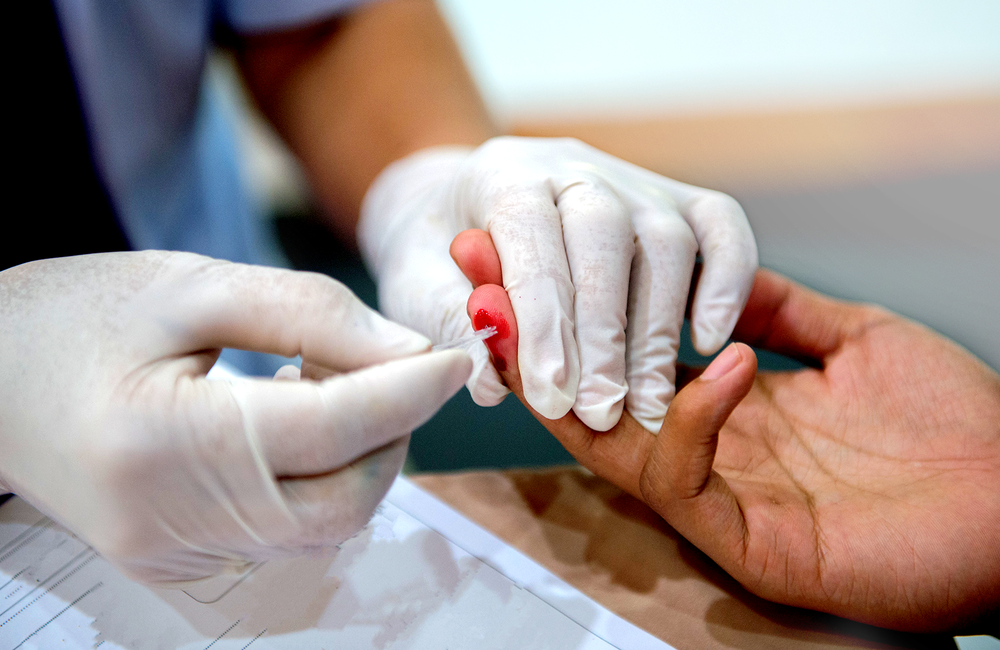Local and international scientists have recorded a 27 percent resistance to anti-HIV drugs dolutegravir, exceeding levels initially observed during its trials.
Before the World Health Organisation approved the drugs over a decade ago, resistance ranged from 3.9 percent to 8.6 percent, records show.
A client during HIV testing and counselling
Titled Virological Findings and Treatment Outcomes of Cases That Developed Dolutegravir Resistance in Malawi’s National HIV Treatment Programme, the research paper is published by Switzerland-based Multidisciplinary Digital Publishing Institute.
It says that out of a sample of 89, 24 had shown resistance to the treatment representing 27 percent
Out of the 24, four or 17 percent died within a year.
“This underlines that HIV Drug Resistance [HIVDR] needs to be managed diligently to prevent severe morbidity and mortality,” the researchers observe.
The scientists say while the sample size might not paint a national picture, it raises concern that prevalence of dolutegravir resistance may be considerable in the country.
Over 15 scientists, drawn from 14 local and international health and academic institutions, including Partners in Hope, University of Washington and University of the Witwatersrand in South Africa conducted the study.
“Some factors that may favour dolutegravir resistance development are prevalent in programmatic circumstances in Malawi, including the predominance of HIV subtype C and the occurrence of functional dolutegravir monotherapy,” the scientists suggest.
Malawian scientists who took part in the research were Pachawo Bisani, Bilaal Matola and Chifundo Chipungu.
They observed that successful management of dolutegravir resistance was possible while early mortality was high.
“These findings indicate the need for a better and more expedient capacity to distinguish dolutegravir resistance from poor adherence in our setting.
“In addition, more research is needed to determine optimal ART management of treatment-experienced individuals harbouring dolutegravir resistance,” reads the paper.
Full transition to dolutegravir-based antiretroviral therapy took place in Malawi’s HIV programme between 2019 and 2021.
In the 2020–2021 survey, 88 percent of around 950 000 persons aged 15 to 49 living with HIV knew their status.
More than 98 percent of persons on ART are on dolutegravir-based regimens.
The National Aids Commission was yet to respond to our questionnaire to react to the findings.
However, Kamuzu College of Health Sciences professor of epidemiology and Public Health Adamson Muula said any signs of resistance towards drugs is worrying.
He was quick though to enlighten that the findings are not all about doom and gloom.
“The percentages that are being quoted are not HIV drug resistance among all patients that are on treatment. The majority of people living with HIV and on treatment have drug sensitive HIV, meaning that the medicines are working effectively.
“People will obviously be interested to know as to whether they should continue being on dolutegravir,” Muula asserted.
However, he said for “the country as a whole, there is no evidence to suggest that the available ARVs are not working. Dolutegravir is not working for some individuals. This is expected.
“There is, however, a need to explore the extent to which dolutegravir resistance is widespread in this country. The evidence gathered so far is inadequate to make that decision.”
The post Study exposes high HIV drugs resistance first appeared on Nation Online.
The post Study exposes high HIV drugs resistance appeared first on Nation Online.
 Moni Malawi
Moni Malawi 

